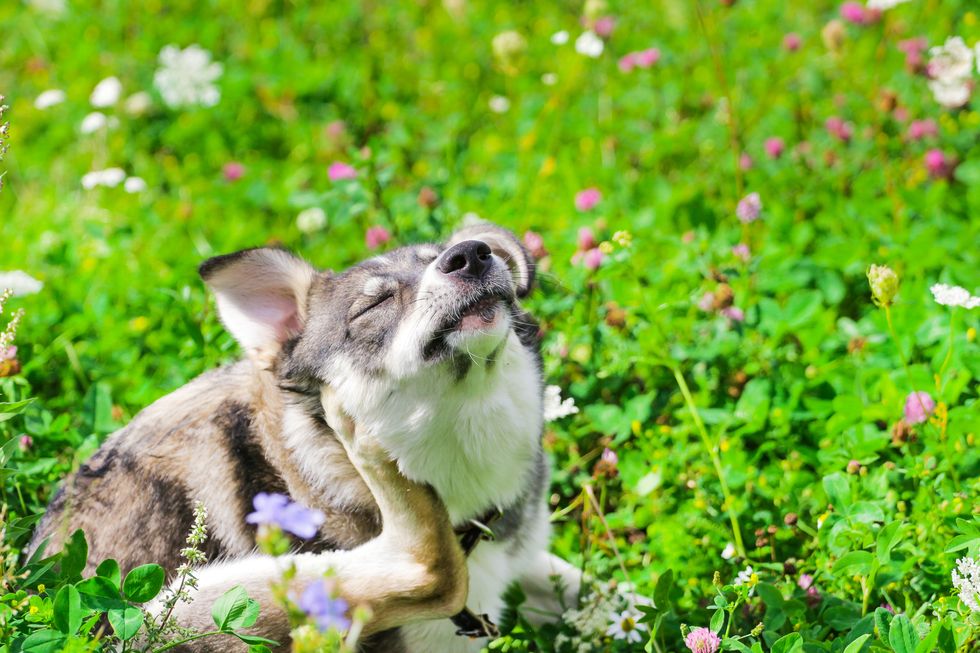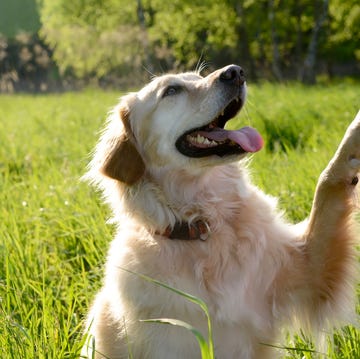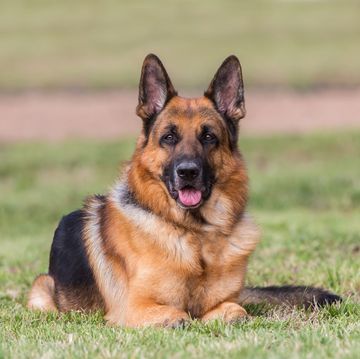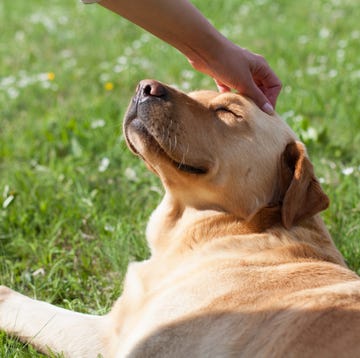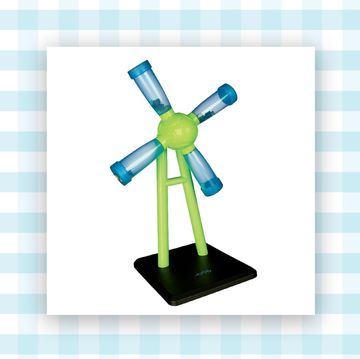Can dogs get hay fever? In short, yes – because the pollen and allergens that affect us as humans in the spring and summer months can also be an irritant for dogs.
Pair this with the fact that dogs love to sniff around and explore the great outdoors throughout the warmer months and we quickly realize that those animals who do suffer from canine hay fever will be very uncomfortable. Here's what you need to look for.
Signs a dog has hay fever
The symptoms of canine hay fever are similar to those we suffer from as humans, and the animal can experience all of them, or just one of them. They can include:
• Sneezing
• Irritated eyes
• Runny nose
• Itchy, irritated skin (this is also a common symptom of Dry Eye so be sure to check with your vet)
•Rashes on the skin
Which dogs are more likely to get hay fever?
Studies have shown that dogs who were not as exposed to the outdoors – including grass, trees and plants – in early life, could be more likely to suffer from canine hay fever, due to a lower tolerance.
According to Webbox, there are some dog breeds which are more likely to suffer from hay fever than others.
"Hay-fever can cause serious discomfort for our beloved pooches. As it is commonly associated with sneezing, many pet owners often don't realise that their dogs are suffering from seasonal allergies, which can worsen discomfort," Leticia Fidalgo Buron, vet and technical manager at Webbox, says.
"Certain breeds are more predisposed to allergies, which can be due to various factors, such as the shape of their noses and the type of their coat. Although mixed breed dogs can suffer with allergies, science has shown that purebred dogs are more genetically prone to allergies."
10 dog breeds most likely to suffer from hay fever
- Pit Bull Terrier
- Bichon Frise
- Boxer
- Cocker Spaniel
- German Shepherd
- Golden Retriever
- Dalmatians
- Irish setters
- Schnauzers
- West Highland terriers
How to treat dog hay fever symptoms?
If you see the above symptoms in your dog, visit your vet and seek advice. The symptoms could be signs of other health issues so it’s important to receive a diagnosis.
There are a few home prevention steps you can take to help your dog feel more at ease, including:
• Brushing their coat after they have been outside to minimize pollen caught in it
• Trim long hair during the spring and summer months
• Wash them more regularly, as well as their bedding, toys and accessories
• Keep your house vacuumed and dust-free
• Keep a diary to see when their symptoms are better or worse to try and isolate the trigger
• Keep the grass short in your garden
• Walk them during the early morning or late evening
It's worth pointing out that some human antihistamines are toxic to dogs, so only give your dog antihistamine under direction from your vet.
How to help relieve hay fever symptoms in dogs
The experts at Haringtons suggest taking the following precautions to help relieve hay fever symptoms in dogs – many of which may be familiar for humans who suffer with the seasonal allergy...
Limit your dog’s exposure to allergens
Keep your dog indoors during peak pollen times, typically early morning and late afternoon and avoid walks in areas with high pollen counts, such as grassy fields.
Wipe down
After walks, wipe your dog’s paws, face, and body to remove pollen and other allergens they may have picked up.
Use an air purifier
Keep an air purifier in the areas where your dog spends the most time to help reduce airborne allergens like pollen and dust mites.
Regular washing
Bathe your dog regularly to remove allergens from their coat and skin, which can help prevent irritation and itching.
Consult your vet
Antihistamines or other allergy medications prescribed by your vet can help relieve symptoms like itching, sneezing, and watery eyes.
Hydrate
Ensure your dog stays hydrated to help keep their skin and mucous membranes healthy, which can reduce irritation.
Consider a hypoallergenic diet
If your dog has food allergies that may be exacerbating their hay fever, try switching to a hypoallergenic or grain-free diet under your vet's guidance.
Emma-Louise Pritchard is the Membership Director for Country Living UK & House Beautiful UK, previously Executive Digital Editor for Country Living UK. Emma-Louise is a digital expert specialising in content strategy, social media and newsletters. Her topics include sustainability, homes and interiors, gardening, health and wellbeing, pets, travel and countryside news. She has previously written for Good Housekeeping and Cosmopolitan and has won several awards, from AOP Digital Editor of the Year 2019 to PPA 30 Under 30. Emma-Louise studied at Cardiff University where she completed an MA in Magazine Journalism.

